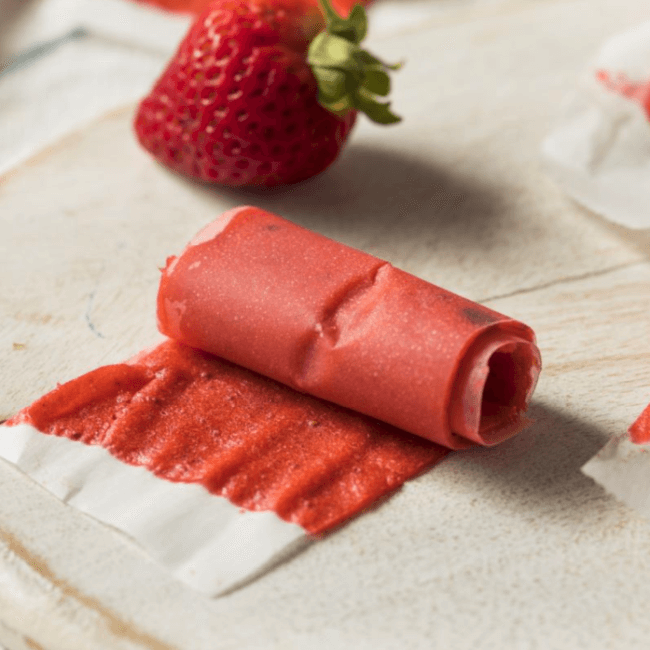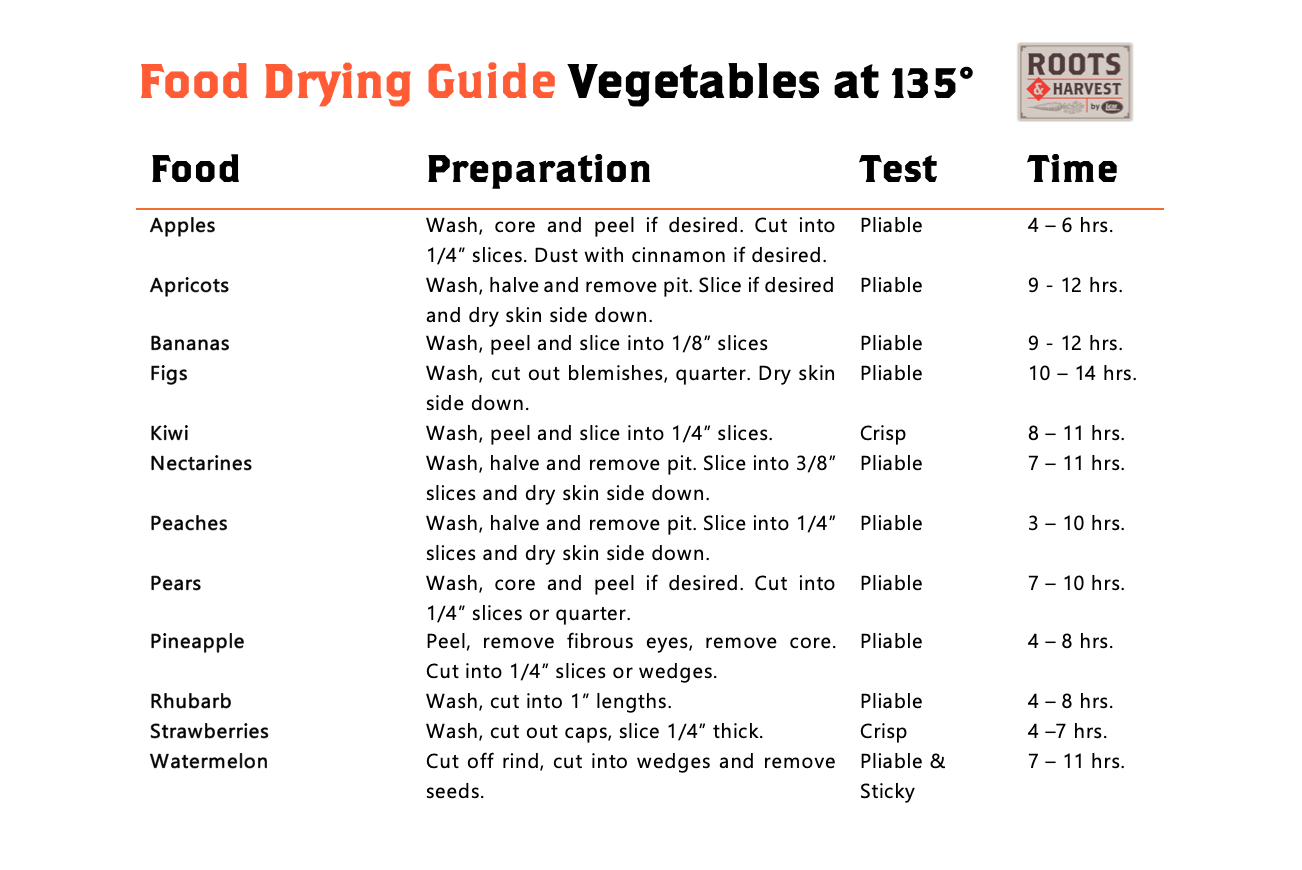

Drying times will vary depending on the room temperature, relative humidity and moisture levels in the food that you are drying. If the moisture level is high, the drying time will be on the high end of the range. Keep in mind that drying times are also affected by the amount of food placed on the dehydrator shelves. Overloading the shelves will slow the drying time and may produce poor results. When dehydrating foods, it is important to check the dryness of the product. If the product is not thoroughly dried, mold may form during storage. To test for dryness, remove a piece of food from the dehydrator and allow cooling to room temperature. Bend and tear the piece to check for internal moisture.
Always remember that drying at a lower temperature for a longer period of time is better than higher temperatures with shorter cooking times. High temperature causes the exterior of the product to form a shell and inhibits the interior of the product from drying.
IMPORTANT: Before you place meat in a dehydrator, it is highly recommended that you heat the meat to an internal temperature of at least 160° BEFORE the dehydrating process. This assures that any bacteria present will be destroyed by wet heat.


For best results when dehydrating, select the freshest foods available. Immature fruits and vegetables do not have as much color and flavor, as do those that are fully matured. Foods should be dehydrated as soon as possible after being harvested. Foods high in sugar, such as apples, pears, peaches, and bananas are prone to darkening as a result of oxidation of the sugars. Here are some pre-treatments that will help reduce this effect. Lemon and Pineapple Juice are natural antioxidants. Place the sliced produce in the juice for a few minutes. Remove, drain and place on the dehydrator shelf. For extra flavor, try sprinkling on cinnamon, Jell-O powders or other sweeteners before dehydrating. Blanching will help to lock in color, flavor and soften the skins of fruits and vegetables, including grapes, cherries, prunes, and plums. There are 2 methods of blanching: water blanching or steam blanching. Ascorbic Acid Mix, a form of vitamin C, which is available at most health food stores, comes in either a tablet or a powder form. Use about 2 - 3 tablespoons of powder or ground tablets per quart of water. Stir to completely dissolve powder. Place fruit into the solution for 2 - 3 minutes. Remove, drain, and place on the dehydrator shelf. Sodium Bisulfite can be purchased at your local pharmacy. If you or anyone who will be eating the food has any known chemical allergies, you should check with your physician before using this chemical. Be certain to ask for food grade (safe) product only. Mix 1 teaspoon of sodium bisulfite in 1 quart of water. Place the sliced fruit in the solution for 2 - 3 minutes. Remove, drain and place on the dehydrator shelf.
Dried foods should be allowed to condition before being placed into a storage container. Generally, let stand for about 1 week in a dry, well-ventilated and protected area. The conditioning time allows for further drying and removes most of the remaining moisture in the food. Dried foods can be placed into clean, dry and insect resistant containers, preferably glass jars. Heavy gauge plastic freezer bags can also be used. Eliminate as much air as possible before sealing the bag.
Vacuum sealers provide ideal storage when properly used. The less air present, the less potential for the formation of molds. Stored foods should be checked monthly for insects and mold. Discard if either is present.
Jerky Tip: After dehydrating jerky, when conditioning, blot jerky with paper towels or napkins to remove the excess moisture and fat droplets.
Dried foods do not need to be reconstituted for consumption. Many people prefer to eat them in their dried state. If you want to reconstitute your food, here are some basic guidelines. Soak food in unsalted water for 3 - 7 minutes and then prepare as usual. If you are boiling them, use the same water they soaked in to preserve nutrients. If you plan to soak foods for more than 1 hour, they should be placed in the refrigerator to prevent bacterial growth. One cup of dried vegetables will reconstitute to about 2 cups. One cup of dried fruit will reconstitute to about 1 1/2 cups. Reconstitution times will vary depending.